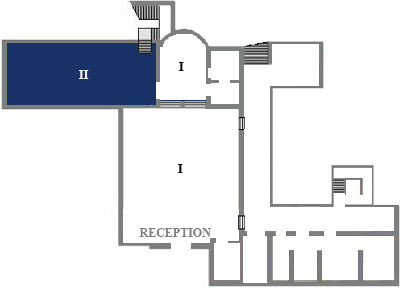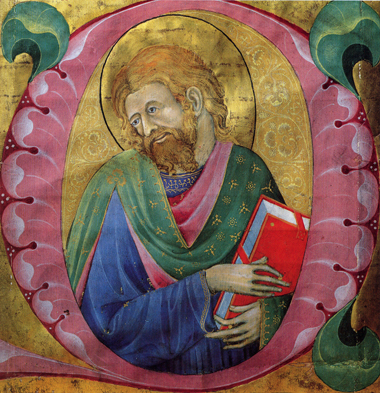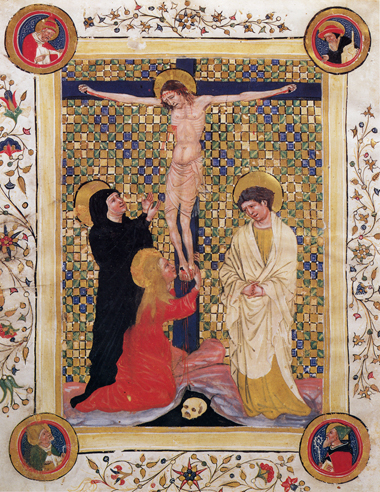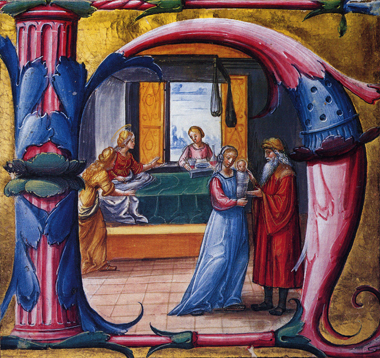Ground floor Room II
Ground floor - Room II - The illuminated miniatures
|
Room II, whose atmosphere evokes the ancient scriptoria, contains a rich collection of illuminated manuscripts. Three complete antiphonaries, many sheets and single initials are ordered here in such a way as to present a fair overview of Italian production, with a few foreign pieces. |
|
|
This important illuminated codex, complete and datable to the second half of the 15th century, is attributed to the illuminator known as the Second Master of Antiphonary M of San Giorgio Maggiore, whose name is still unknown. This illuminator worked between the Veneto and Emilia regions and was the collaborator of the grand master Belbello da Pavia. The anthem-book, which is in an excellent state of preservation, comes from the convent of St. Sixtus in Piacenza. Its decorations are unusually lush, with two or more illuminated initials for each liturgical celebration. 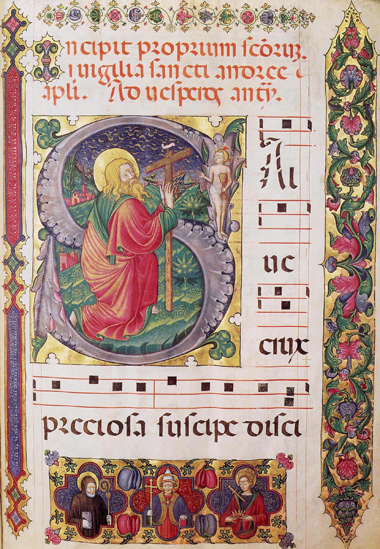 |
|
|
Belbello da Pavia Saint with book Second half of 1400 The large illuminated letter Q, datable to the last working years of this great master (1465-1470), frames a bearded saint holding a book. This fragment almost certainly comes from a second anthem-book made for the community of San Giorgio Maggiore in Venice.
|
|
|
Cristoforo Cortese
|
|
|
Master B. F.
|
|
|
Master of Jean de Dunois (Jean Haincelin?) This courtly miniature was part of a codex narrating the deeds of King Arthur, Lancelot and Guinevere. The manuscript was probably created in Paris for the Duke of Berry about halfway through the 15th century, and can be attributed to the Master of Jean de Dunois, who owes his name to the fact of having illuminated the Book of Hours for the bastard son of the Duke of Orleans, Jean de Dunois. 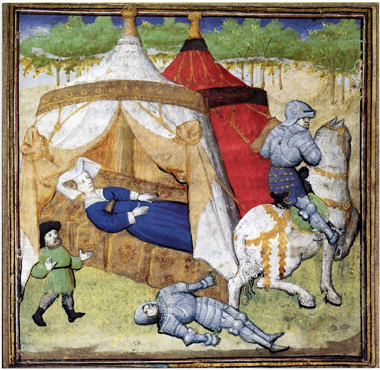 |


